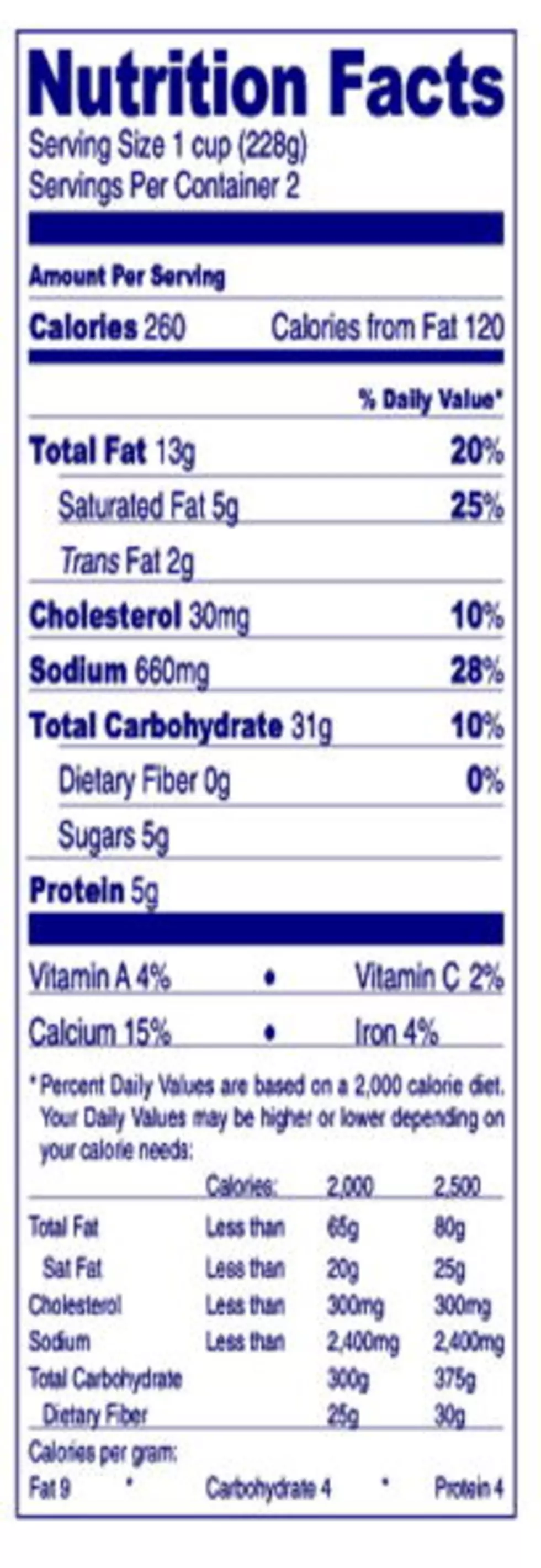
Nutrition Labels 101- How To Read The New Label
Getty Images / Handout
Do you ever really look at the nutrition label or do you just dig right into what you’re eating? The Nutrition Facts label was created to give us, the consumer, insight into what’s in our foods, from how much sodium and fiber is in a box of cereal to how much fat is in a bag full of almonds.
Knowing this information can help us compare products more easily, track nutrients, ensure we’re getting enough vitamins and minerals, and not getting too much of what we shouldn’t be eating. We can see if we need more or less of a particular nutrient and reading the label can even help us manage certain chronic conditions and special diets.
So, whether you’re a little unclear how to read the Nutrition Facts label or want to understand why it's useful in making the best nutrition decisions, we’ve got four dietician-approved answers to the most common questions about nutrition labels.
- BaderElbert
BaderElbert 1Check Calories and Serving Size
It can be easy to get confused between the serving size, servings per container, and portion size of food. Heres a quick rundown:
- Serving size is the size or portion of the product that equates to the amount of nutrients listed. All the information provided in the Nutrition Facts label is based upon the serving size listed
- Serving per container is the total amount of servings per container
- Portion size isn't found on the Nutrition Facts label. It's different for everyone based on their unique health goals and needs, like if they have a medical condition.
Once you’ve identified the food item’s serving size, located under the Nutrition Facts header, consider how many calories are in one serving and what this means for the label as a whole.
- jeka1984
jeka1984 2Look for the Fiber
Most of us understand that fiber is an important part of our diet. But most Americans are actually not consuming enough fiber on a daily basis. The recommended daily fiber intake depends on age, sex, and calorie intake. General guidelines from the National Academy of Sciences recommends the following daily fiber intakes:
If under 50 years old:
Women: 25 grams
Men: 38 grams
If over 50:
Women: 21 grams
Men: 30 grams
Fiber is one of those nutrients on the label that should ideally be in the higher range. In other words, look for foods with a fiber DV of around 20 percent per serving.
- olgakr
olgakr 3Know your Sugars
There’s still a lot of discussion around the issue of added sugar as it pertains to health. It can, however, be agreed upon that in general, a person’s daily total added sugar intake should be low. Before getting into what an ideal added sugar intake should look like for a day, let’s first talk about the difference between total sugars and added sugars:
Total Sugars- are the total amount of sugars found in a product, both naturally occurring (like sugars in fruit and milk) and added.
Added sugars- simply refer to the amount of sugar that's been added during the processing of the food product. Added sugars can include high fructose corn syrup, table sugar, honey, maple syrup, concentrated vegetable or fruit juices, and brown rice syrup.
The American Heart Association recommends women consume no more than 24 grams of added sugar per day and men consume no more than 36 grams.
For Women: 6 teaspoons of sugar, or 100 calories
For Men: 9 teaspoons of sugar, or 150 calories
- Getty Images / Handout
Getty Images / Handout 4Check the Percent of Daily Value
Percent of Daily Value puts nutrients on a scale from 0% to 100%. This scale tells you if there is a little or a lot of a nutrient in one serving of a packaged food. Use this percentage to compare the nutrient content of different foods.
More From SoJO 104.9 FM










